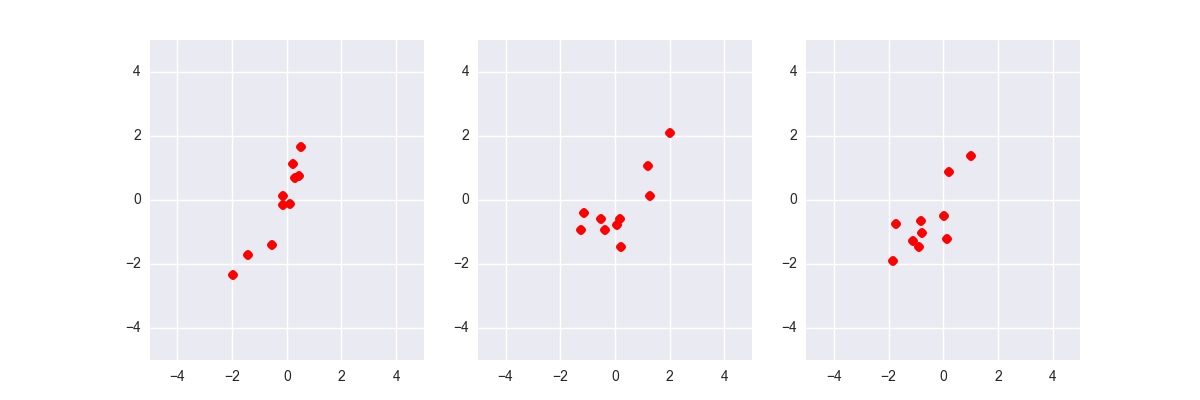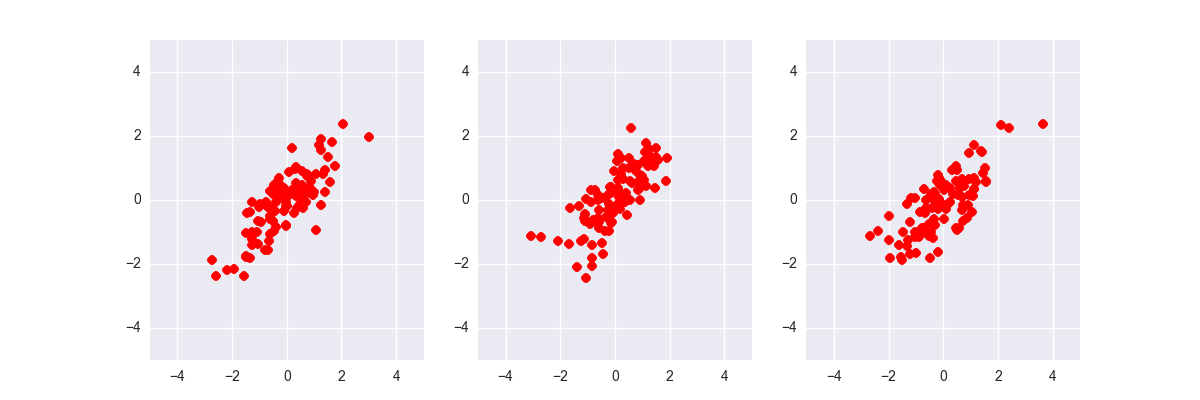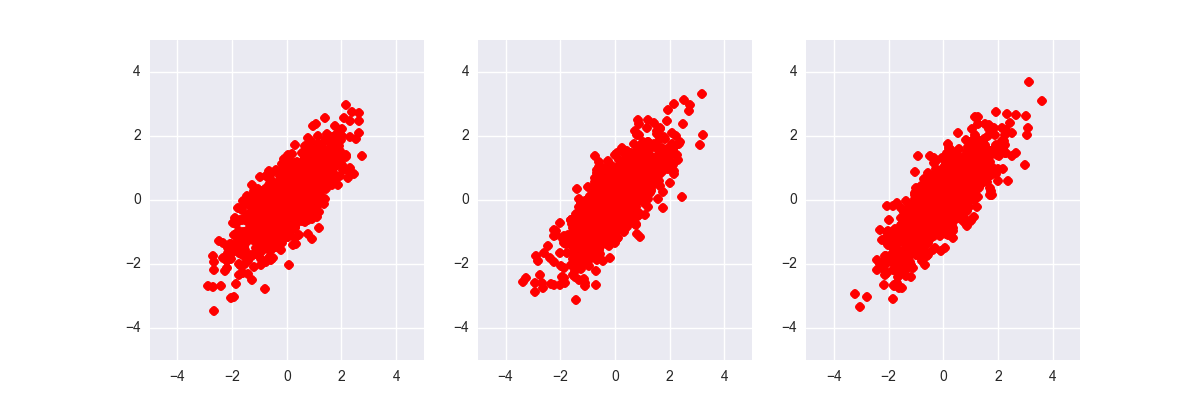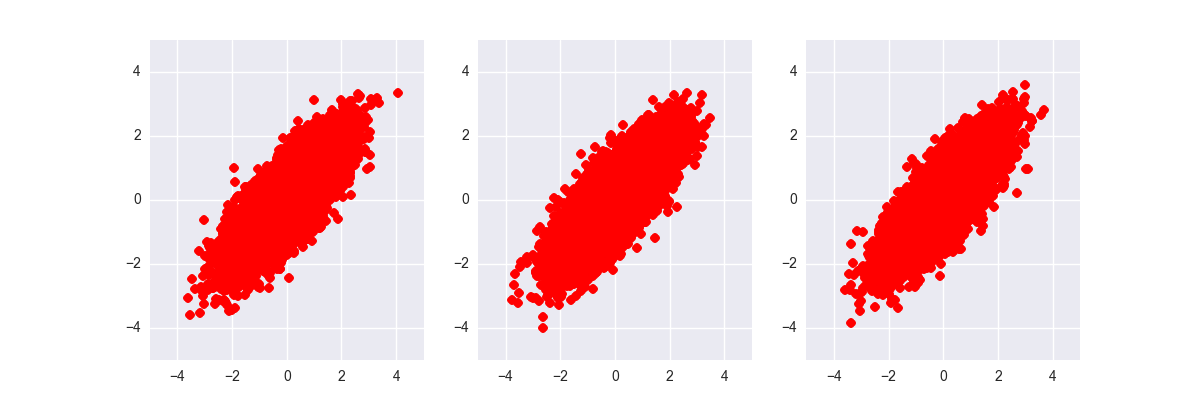機械学習プロフェッショナルシリーズの「統計的因果探索」を読んでいて出てきた擬似相関の数値例を再現する部分をPythonでやります(本の1.3章 図1.4あたり)。見かけ上の相関関係からは、背景のデータ生成モデルを理解できない場合があるという例。
- モデル共通
- zが平均0、分散1の正規分布に従う
- $e_x$と$e_y$は和に使った後の変数$x, y$が分散1になるようなノイズ(平均は0)
- モデル1
- $x = 0.3z + e_x$
- $y = 0.7x + 0.3z + e_y$
- モデル2
- $x = 0.7y + 0.3z + e_x$
- $y = 0.3z + e_y$
- モデル3
- $x = 0.89z + e_x$
- $y = 0.89z + e_y$
# -*- coding: utf-8 -*-
import numpy as np
import seaborn as sns
import matplotlib.pyplot as plt
def gendata(N=100, verbose=False):
# Model 1
z1 = np.random.normal(0.0, 1.0, N)
ex1 = np.random.normal(0.0, np.sqrt(1-0.3**2), N)
ey1 = np.random.normal(0.0, np.sqrt(1-0.7**2-0.3**), N)
x1 = 0.3 * z1 + ex1
y1 = 0.7 * x1 + 0.3 * z1 + ey1
if verbose:
print("model 1")
print(np.std(x1))
print(np.std(y1))
# Model 2
z2 = np.random.normal(0.0, 1.0, N)
ex2 = np.random.normal(0.0, np.sqrt(1-0.7**2-0.3**), N)
ey2 = np.random.normal(0.0, np.sqrt(1-0.3**2), N)
y2 = 0.3 * z2 + ey2
x2 = 0.7 * y2 + 0.3 * z2 + ex2
if verbose:
print("model 2")
print(np.std(x2))
print(np.std(y2))
# Model 3
z3 = np.random.normal(0.0, 1.0, N)
ex3 = np.random.normal(0.0, np.sqrt(1.0-0.89**2), N)
ey3 = np.random.normal(0.0, np.sqrt(1.0-0.89**2), N)
x3 = 0.89 * z3 + ex3
y3 = 0.89 * z3 + ey3
if verbose:
print("model 3")
print(np.std(x3))
print(np.std(y3))
return x1, y1, x2, y2, x3, y3
if __name__ == '__main__':
for n in [10, 100, 1000, 10000]:
x1, y1, x2, y2, x3, y3 = gendata(n)
plt.figure(figsize=(12, 4))
plt.subplot(1, 3, 1)
plt.xlim(-5, 5)
plt.ylim(-5, 5)
plt.plot(x1, y1, "ro")
plt.subplot(1, 3, 2)
plt.xlim(-5, 5)
plt.ylim(-5, 5)
plt.plot(x2, y2, "ro")
plt.subplot(1, 3, 3)
plt.xlim(-5, 5)
plt.ylim(-5, 5)
plt.plot(x3, y3, "ro")
plt.savefig("N{}.png".format(n))



